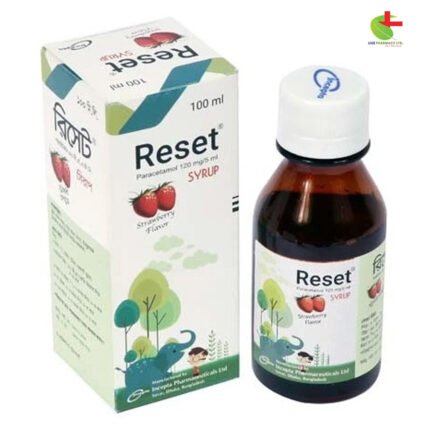Purisal 100ml
30.00৳ Bottle (50ml)
- Purisal is a bronchodilator used to treat and prevent bronchospasm in adults, adolescents, and children aged 6 and older with reversible obstructive airway diseases.
- It contains Levosalbutamol, a selective beta-2 agonist, that provides effective bronchodilation with fewer side effects than racemic salbutamol.
- Available in tablet and syrup forms for easy administration.
- Always use as prescribed by a healthcare professional for optimal safety and efficacy.
 Brand
Brand
|
Incepta Pharmaceuticals Ltd |
|---|---|
 Generics
Generics
|
Levosalbutamol |
 Type
Type
|
Syrup |
Indications
Purisal is used to treat and prevent bronchospasm in adults, adolescents, and children aged 6 years and older, suffering from reversible obstructive airway diseases such as asthma or chronic obstructive pulmonary disease (COPD).
Note: Always follow the advice of a registered healthcare professional before using this medication.
Pharmacology
Levosalbutamol, a single-isomer beta-2 agonist, is an effective bronchodilator. It differs from racemic salbutamol by eliminating the (S)-isomer, which enhances its effectiveness while minimizing beta-mediated side effects. This allows for comparable bronchodilation with a reduced risk of adverse reactions compared to racemic salbutamol.
Dosage & Administration
Tablets:
- Adults & Adolescents (12 years and older): 1-2 mg three times daily.
- Children (6-11 years): 1 mg three times daily.
Syrup:
- Adults: 5-10 ml three times daily.
- Children (6-11 years): 5 ml three times daily.
Note: Always follow the dosage recommendations as prescribed by your healthcare provider.
Drug Interactions
Caution is required when using Purisal with other short-acting sympathomimetic bronchodilators or epinephrine. If additional adrenergic medications are prescribed, they should be administered with care to avoid negative cardiovascular effects.
Contraindications
Levosalbutamol should not be used by individuals with a known hypersensitivity to levosalbutamol or any of its components.
Side Effects
Possible side effects include hypocalcemia, palpitations, fine tremors, muscle cramps, nausea, vomiting, burning sensations in the chest, epigastric pain, and diarrhea. If any of these persist or worsen, consult a healthcare professional.
Pregnancy & Lactation
Purisal should only be used during pregnancy if the potential benefits outweigh the risks to the fetus. It is unclear whether levosalbutamol is excreted in human milk, so caution is recommended when administering the drug to nursing mothers.
Precautions & Warnings
Extra caution is required for patients with acute severe asthma, as its effects may be intensified by hypoxia or concurrent treatments (e.g., xanthine derivatives, steroids, and diuretics). In these cases, monitoring of serum potassium levels is advised.
Overdose Effects
Symptoms of overdose typically involve excessive beta-adrenergic stimulation, including those listed under side effects. In case of severe overdose, the stomach should be emptied, and if necessary, a beta-blocker may be used cautiously in patients with a history of bronchospasm.
Therapeutic Class
Short-acting selective β2-adrenoceptor stimulants.
Storage Instructions
Keep all medications out of reach of children. Store in a cool, dry place away from light.













Reviews
There are no reviews yet.